Canada experienced an unprecedented immigration boom after the pandemic, which caused a record housing shortage.
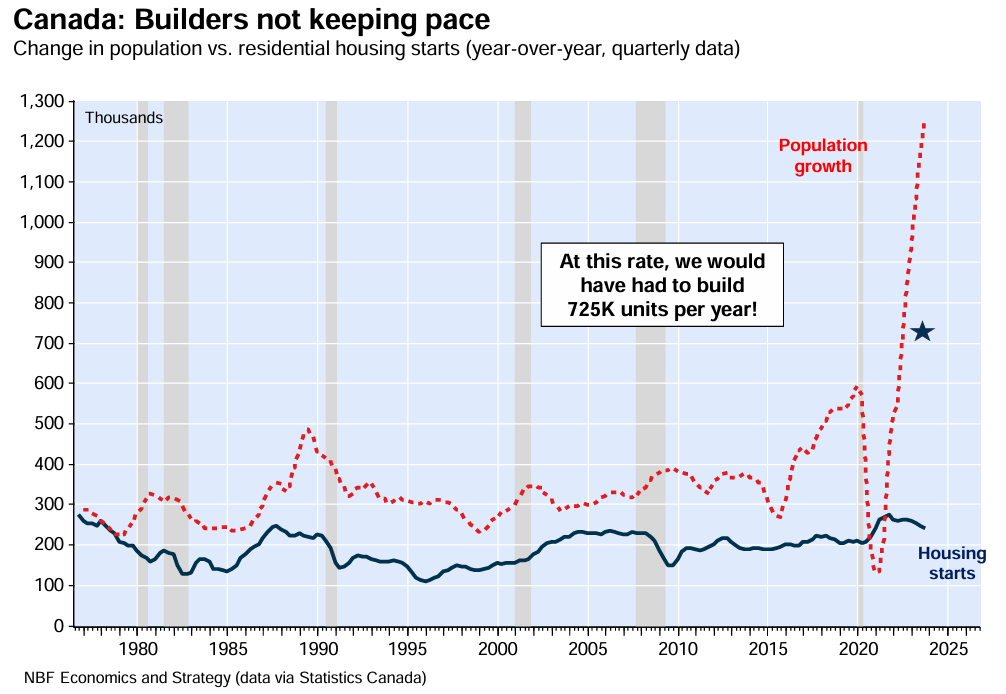
As a result, Canada’s rental vacancy rate fell to a record low and rental inflation soared, delivering the worst rental crisis in living memory.
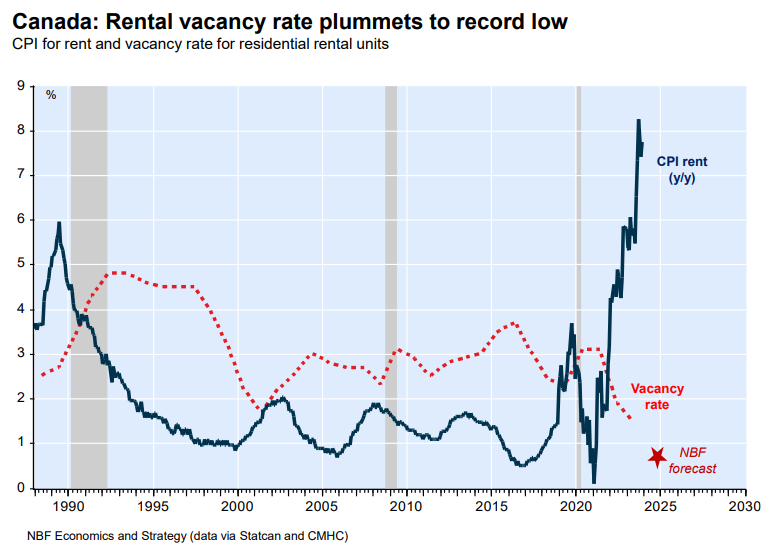
The following chart from the National Bank of Canada estimates that the nation’s shortage of rental housing exceeds 450,000 units.
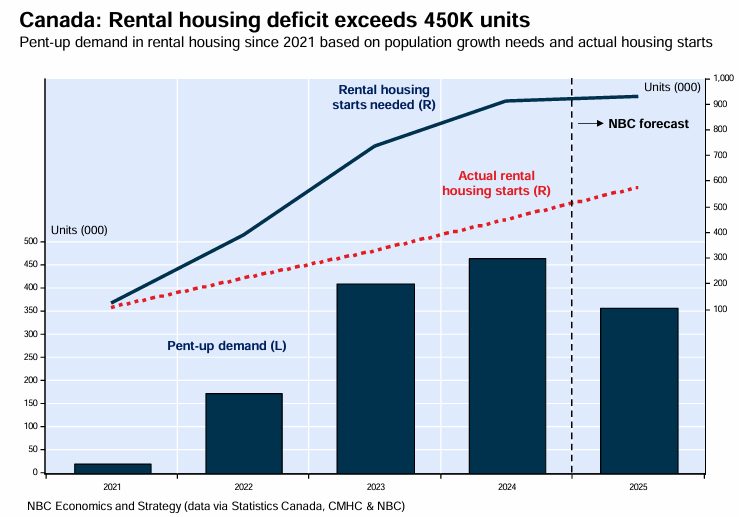
The situation is changing, however, following the Canadian government’s immigration freeze.
Following an intense voter backlash, Canada’s Liberal Government admitted that immigration had been too high and implemented an immigration/population “freeze” aimed at stabilising the population at its current level for three years.
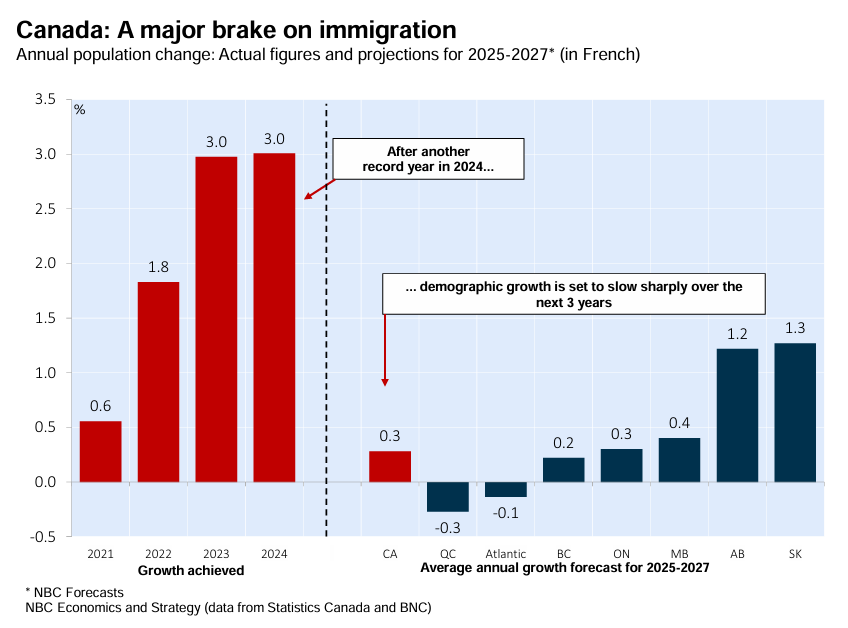
The immigration freeze has proven effective, with Canada’s quarterly population growth plunging to only 20,100 in Q2 2025. Only two other quarters in history have shown weaker population growth: during the pandemic in 2020, when border restrictions prevented any growth, and in 2015.

Annual population growth remained solid at 1.24% (+510,400 people) in Q2 2025. However, it is less than half the pace of the peak observed in 2023.
Meanwhile, Canadian housing starts remained roughly stable (-700) in May at 279,500 (seasonally adjusted and annualised).
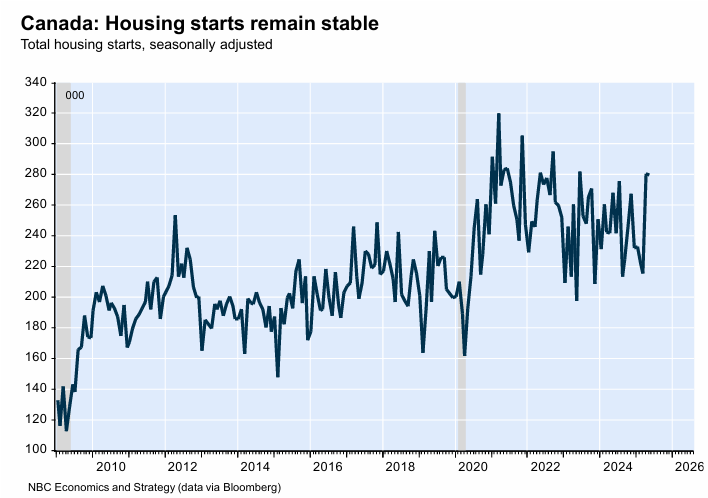
As a result, Canada’s housing shortage and rental crisis are easing.
Indeed, slower population growth has driven eight consecutive monthly declines in Canadian asking rents, which are tracking 3.3% below a year earlier.
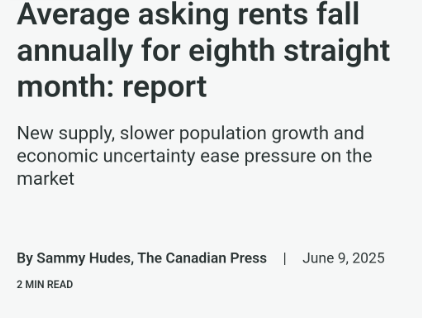
“The easing in rents this year across most parts of the country is a positive for housing affordability in Canada following a period of extremely strong rent inflation lasting from 2022 to 2024”, Urbanation president Shaun Hildebrand said.
There are clear lessons here for Australia, where policymakers and the media continue to paint the housing crisis as a “supply issue”.
The latest State of the Housing Report from the National Housing Supply and Affordability Council (NHSAC) forecasts that Australia’s cumulative housing shortage will worsen by 79,000 dwellings over five years.
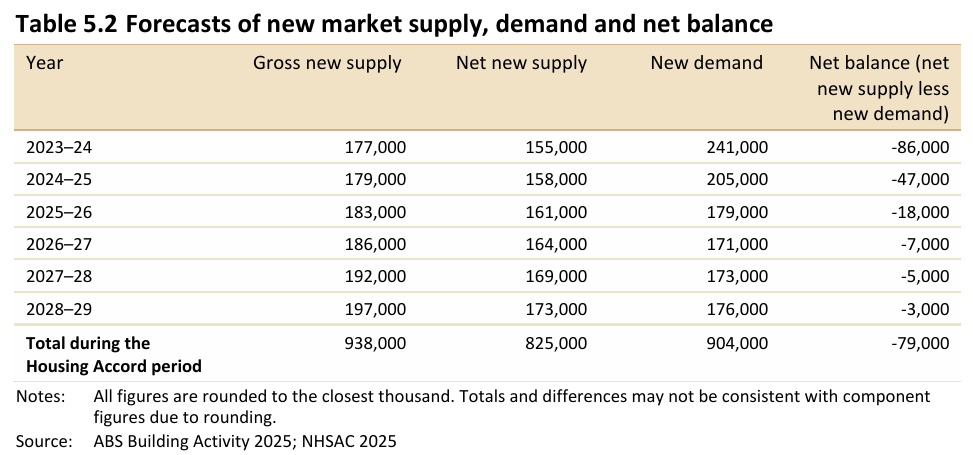
NHSAC’s population forecasts are based on the Centre for Population’s projections, which assume permanently high levels of immigration.
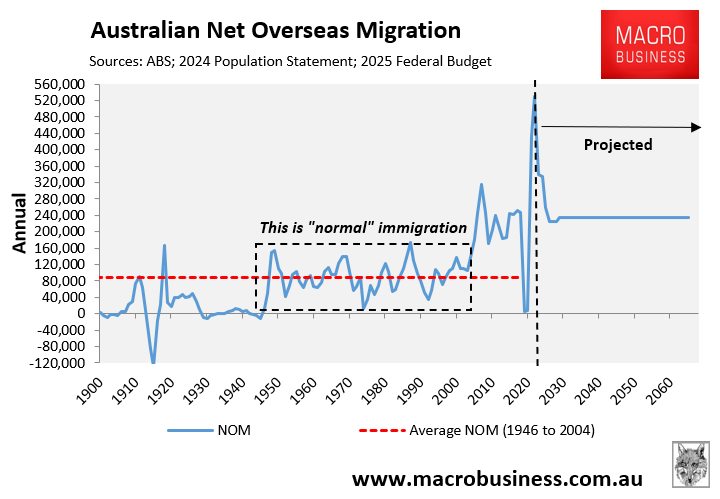
However, NHSAC’s sensitivity analysis showed that if Australia’s population grew by just 15% less than forecast over the next five years, then the projected 79,000 housing shortage would turn into a 40,000 surplus.
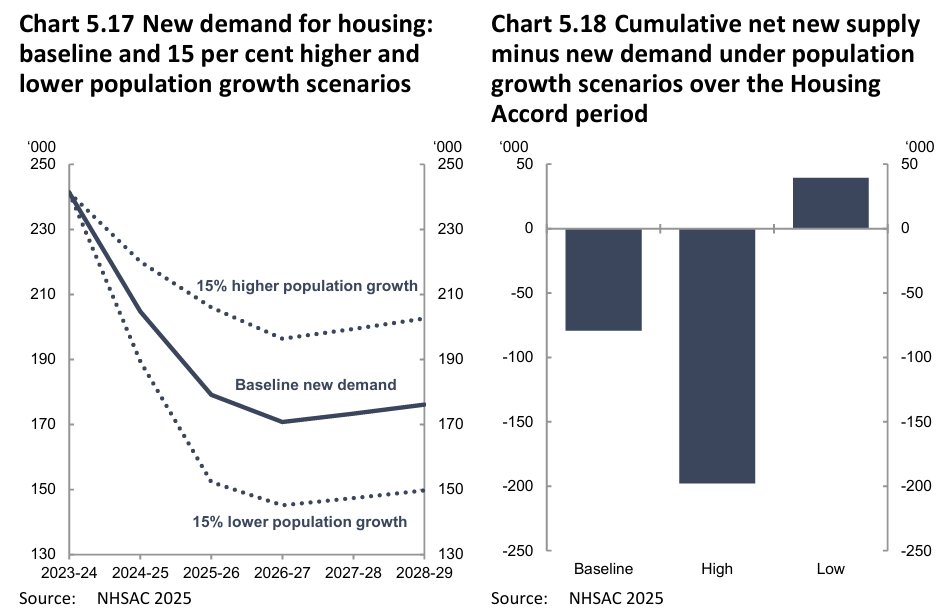
NHSAC’s sensitivity analysis and Canada’s experience are further evidence that cutting immigration is the only realistic solution to the housing shortage and rental crisis.

